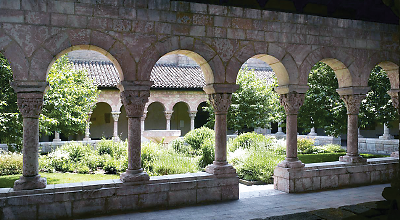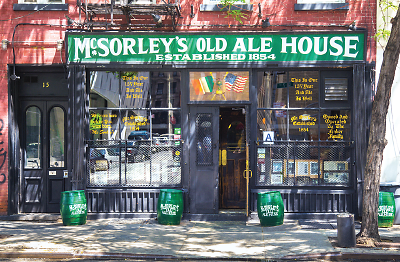The theaters, restaurants, and shopping in central Manhattan are great, but there is always more to see elsewhere on “the island at the center of the world.”
For instance, beginning three blocks from the APA annual meeting’s home base at the Javits Convention Center is the northern terminus of one of New York’s newest and most unusual attractions, one that is long and tall and thin.
We’re talking about the High Line: a city park 1.45 miles long, barely wide enough to accommodate two sets of railroad tracks, and sitting 30 feet in the air.
The High Line runs north from Gansevoort Street (below 14th Street in the West Village) up to West 30th Street at 10th Avenue. An extension now under development will carry the park around existing rail yards up to West 34th Street sometime this year.
From 1929 until 1980, the High Line was indeed a railroad, shuttling sacks of mail to the Post Office, foodstuffs to and from factories and warehouses, and sides of beef to the meatpacking district. The rail line was at street level from 1851 to 1929, but the hazards of running trains across streets and alleys became so apparent that the elevated road bed was constructed.
The tracks were built not over the street but through the middle of the blocks traversed, allowing trains to stop next to or even enter the industrial buildings along the way. The last train, carrying three carloads of frozen turkeys, made its way along the High Line in 1980.
Area residents helped preserve the High Line from demolition in the 1990s. Work began in 2006, and the park opened in stages in 2009 and 2011.
Today the High Line is one long walking path, accented by plantings, special viewing locations, a horticultural preserve (at West 16th Street), a gift shop, and amphitheater. Food vendors offer snacks and there’s also an open-air cafe, Terroir at The Porch.
Medieval Europe Finds New York Home
To the north, far from the traffic-choked streets of Midtown but still attached to Manhattan, lies Fort Tryon Park , home to The Cloisters. Reconstructed from elements taken from five European monasteries, this northern branch of the Metropolitan Museum of Art highlights the art and architecture of medieval Europe.
Even the gardens were planted with vegetation documented in poetry, garden books, and art of the same era.
The Cloisters is more than architecture, however. The Merode Altarpiece, a triptych portraying the Annunciation, has been called “one of the most celebrated early Netherlandish paintings—particularly for its detailed observation, rich imagery, and superb condition.”
But perhaps the most famous work is the “Unicorn in Captivity,” one of a series of seven tapestries woven about 1500. It may represent “the beloved tamed,” according to the museum catalog, and the images of plants and flowers are so true to life that their species can be identified.
Imbibe at Historic Tavern
From high- to low-brow and a taste of an older, bluer-collar New York, find time to drop by McSorley’s Old Ale House in Greenwich Village, near New York University. Its slogan—“We were here before you were born”—is guaranteed to be true, since the establishment opened for business in 1854. McSorley’s came to fame through the works of two artists: John Sloan’s paintings from the early 1900s and Joseph Mitchell’s classic New Yorker story in 1940.
“At midday McSorley’s is crowded,” Mitchell wrote. “The afternoon is quiet. At 6, it fills up with men who work in the neighborhood. Most nights there are a few curiosity-seekers in the place. If they behave themselves and don’t ask too many questions, they are tolerated.”
One other thing: don’t ask for the beer list at McSorley’s. Only the house brand is served, in light and dark varieties.
The bar is still there and so is the pot-bellied stove that kept the place warm in winter in Mitchell’s day. Turkey wishbones are hooked over the chandelier, mementoes of departing World War I doughboys, according to legend. The city health department forced the management to dust them off a couple of years ago so as not to contaminate the patrons’ ale.
Another tradition ended in 1970 when the Supreme Court pried open the door that kept women out.
Food—burgers, chili, and a few other items chalked up on the board—are available and pretty good, according to a recent review in the New York Times, which noted: “[A]s ancient, poetic, dust-caked, gimcrack-packed, sawdust-carpeted shrines go, McSorley’s is arguably the best in America.” ■




